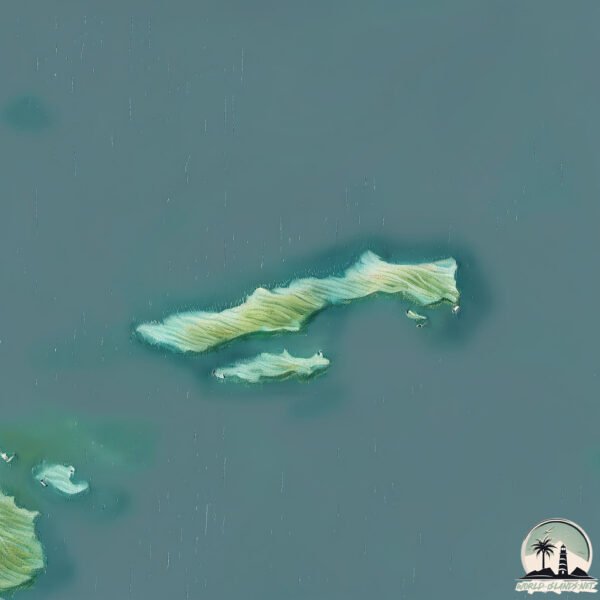Welcome to Ugamak , a Temperate island in the Bering Sea, part of the majestic Pacific Ocean. This guide offers a comprehensive overview of what makes Ugamak unique – from its geography and climate to its population, infrastructure, and beyond. Dive into the details:
Geography and size of Ugamak
Size: 9.789 km²Coastline: 40.2 kmOcean: Pacific OceanSea: Bering SeaContinent: North America
Ugamak is a Small Island spanning 9.8 km² with a coastline of 40.2 km.
Archipel: Aleutian Islands – A chain of islands stretching from Alaska to Russia, known for their rugged beauty, abundant wildlife, and volcanic activity.
Tectonic Plate: North America – Covers North America and parts of the Atlantic and Arctic Oceans, characterized by diverse geological features and varying levels of seismic activity.
The geographic heart of the island is pinpointed at these coordinates:
Climate and weather of Ugamak
Climate Zone: TemperateClimate Details: Subpolar Oceanic ClimateTemperature: Cold Summer
Climate Characteristics: Predominantly cold with cool summers and no dry season. Often found in coastal areas at higher latitudes or on islands.
Topography and nature of Ugamak
Timezone: UTC-09:00Timezone places: America/AnchorageMax. Elevation: 220 m Mean Elevation: 122 mVegetation: Deciduous Needleleaf ForestTree Coverage: 56%
The mean elevation is 122 m. The highest elevation on the island reaches approximately 220 meters above sea level. The island is characterized by Hills: Gently sloping landforms with rounded tops, having a maximum elevation between 200 and 500 meters. Hills contribute to a varied landscape on islands.
Dominating Vegetation: Deciduous Needleleaf Forest
Vegetation: 9 vegetation zones – Very Highly Diverse Island
Infrastructure and Travelling to Ugamak
Does the island have a public airport? no .
Does the island have a major port? no .
The mean population of Ugamak is 0 per km². Ugamak is Uninhabited. The island belongs to United States of America .
Continuing your journey, Tigalda is the next notable island, situated merely km away.
MFS : 2nd leg Bush trip Alaska, Akutan Airport (PAUT) - Cape Sarichef Airport (PACS)
MFS Bush Trip Alaska The second leg of this journey. A chain of elongated islands and we are on a large volcanic island.
MFS : 2nd leg Bush trip Alaska, Akutan Airport (PAUT) - Cape Sarichef Airport (PACS)
MFS Bush Trip Alaska The second leg of this journey. A chain of ...
MFS Bush Trip Alaska The second leg of this journey. A chain of elongated islands and we are on a large volcanic island.
Fox Islands (Alaska)
Fox,Islands,(Alaska) ...
Fox,Islands,(Alaska) The,Fox,Islands,are,a,group,of,islands,in,the,eastern,Aleutian,Islands,of,the,US,state,of,Alaska,The,Fox ...
Steller Sea Lions In Jeopardy
Journey to Alaskas North Pacific in this University of ...
Journey to Alaskas North Pacific in this University of Alaska-Fairbanks video, and see how Steller sea lions live in this beautiful, ...
United States of America is classified as Developed region: G7: Group of Seven – Major advanced economies, including Canada, France, Germany, Italy, Japan, the United Kingdom, and the United States. The level of income is High income: OECD.
News – Latest Updates and Headlines from Ugamak
Stay informed with the most recent news and important headlines from Ugamak. Here’s a roundup of the latest developments.
Loading...
Please note: The data used here has been primarily extracted from satellite readings. Deviations from exact values may occur, particularly regarding the height of elevations and population density. Land area and coastline measurements refer to average values at mean high tide.

